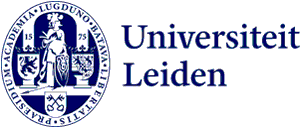289 search results for “soil” in the Public website
-
Quantitative modelling of the response of earthworms to metals
Promotor: Prof.dr. W.J.G.M. Peijnenburg, Co-promotor: Dr. ing. M.G. Vijver
-
Ecologist Emilia Hannula receives Gold Medal in Teylers Museum
Soil ecologists Emilia Hannula (Leiden) and Elly Morriën (UvA) received the Golden Medal of Teylers Tweede Genootschap on 5 November. They received the prize for their submission to a competition on sustainable soil management.
-
Fate, accumulation and impact of metallic nanomaterials in the terrestrial environment
The rapidly increasing commercial application of metallic nanoparticles within products will inevitably enhance the amount of NPs being released into soil.
-
Effect of Nanoparticles on Microbial Catabolism and Community Structure using Biolog techniques
1. To what extent do metallic NPs added to soil extractions change the activity, abundance, or community composition of microbes? 2. How do the effects of metallic NPs on soil microbes differ from the effects of the ions shedding from corresponding NPs?
-
Understanding the role of mycorrhizas in global carbon cycle processes
How the global distribution of vegetation stands dominated by arbuscular and ectomycorrhizal plants relate to principle aspects of belowground carbon accumulation processes?
-
Impact of plant domestication on spermosphere and rhizosphere microbiome composition
Microbiome composition of the spermosphere and the rhizosphere of wild and modern bean accessions grown in an agricultural and a native soil from Colombia was characterized by metagenomics and cultivation-dependent approaches.
-
Natural Resources and Spatial Structure at Dzehkabtún, Mexico
This projects investigates spatial relations between soils and other resources and the urban layout of a classic Maya center in Campeche, Mexico.
-
Volatile compounds from Actinobacteria as mediators of microbial interactions
Streptomyces are bacteria abundant in soil that participate in diverse and complex interactions. These bacteria are the main producers of the antibiotics we currently use in the clinic.
-
Fungi of the greening Arctic: compositional and functional shifts in response to climatic changes
Promotor: E.F. Smets Co-promotor: J. Geml
-
Peeking into the future: Fungi in the greening Arctic
Promotor: E.F. Smets, Co-promotor: J. Geml
-
The Ecology and Evolution of Microbial Warfare in Streptomyces
The soil-dwelling, filamentous bacteria of the genus Streptomyces are renowned for their production of useful secondary metabolites including antibiotics. The work described in this thesis provides new insights on the role and regulation of antibiotic production and resistance in these bacteria.
-
Microbial hitchhiking
How do nonmotile microbes leverage communal motility?
-
Nano shapes micro : Impacts of metallic nanoparticles on microbial communities
This thesis aimed to investigate the impact of exposure dynamics, relative contributions of ENPs(particle) and ENPs(ion), and dosing regimens on the toxicity of ENPs varying in different physico-chemical properties, on the composition and functioning of soil microbial communities.
-
Even plants can have neighbour trouble
Restoring a natural plant environment on exhausted agricultural lands and in nature areas is difficult. We can speed this up by steering the soils towards the desired situation. This is what Martijn Bezemer, newly appointed Professor of Ecology of Plant-Microbe-Insect interactions at Leiden University’s…
-
New antibiotics
Pathogenic bacteria are increasingly resistant to today’s antibiotics. Professor Gilles van Wezel seeks new forms of antibiotics in good bacteria that live in the soil.
-
TERRA: TERraced landscape of RAmosch, Switzerland
This project investigates the well-preserved agricultural terraces of the Inn valley and the evolution of resource use in the inner Alps.
-
Morphogenesis and heterogeneity in liquid-grown streptomyces cultures
The filamentous bacteria Streptomyces are widespread inhabitants of terrestrial soils.
-
Development of life cycle assessment for residue-based bioenergy
Promotores: Prof.dr.G.R. de Snoo and Dr. R. Heijungs
-
 Riccardo Mancinelli
Riccardo MancinelliScience
r.mancinelli@cml.leidenuniv.nl | +31 71 527 2727
-
 Pengxuan Xie
Pengxuan XieScience
p.xie@cml.leidenuniv.nl | +31 71 527 2727
-
 Chenguang Gao
Chenguang GaoScience
c.gao@cml.leidenuniv.nl | +31 71 527 2727
-
MicroGRICE: Greenhouse Gas Reduction in RICE: MICRO-biome climate smart applications
Can we use indigenous microbial rice communities to reduce methane production in agricultural settings?
-
Food
The research within the Food research programme at CML focuses on a transition towards sustainable food production and consumption systems. We investigate from a very small to a very large scale, at a local, national or international level. We do so by researching for example molecular tools, food systems,…
-
 Peter van Bodegom
Peter van BodegomScience
p.m.van.bodegom@cml.leidenuniv.nl | +31 71 527 7486
-
Annual report CML 2016
In 2016, CML published over 90 papers, successfully crowdfunded the Living Lab project, celebrated a royal honour for associate professor Hans de Iongh and contributed to the Global Soil Biodiversity Atlas. CML awarded five PhDs and taught students from all over the world how to contribute to sustainability.…
-
Ecotox
Ecotox is a stimulating top-facility that provides an integrative research environment around the topic of ecotoxicological testing and experimental research. Research focus: Dose-response modelling Mode-of-actions and mechanism-of-actions Test method development, in view of targets in AOPs (adverse…
-
Plant Sciences
The mission of the Plant Science research programme is to contribute to the sustainable production of high quality crops, flowers and high-value bio-based products. This is realised by generating fundamental knowledge of basic biological processes related to development of plants and their interaction…
-
Knowledge from now
Osteoarchaeologists help forensic scientists solve crimes. They also study bone material from the Second World War in order to identify victims.
-
TRIPS: Thrips Reduction In Production Systems
Increasing above- and belowground biodiversity in arable leek cultivation to stimulate pest control by natural enemies.
-
Biodiversity
Biodiversity is under pressure worldwide, but is essential for our health, food security and well-being. What is the influence of human actions on ecosystems? Can we provide biodiversity-inclusive solutions for our key societal challenges? These questions are central to the Biodiversity research the…
-
Institute of Environmental Sciences (CML): best institute for quantitative environmental issues
A liveable planet. More biodiversity. And resources which are being managed wisely. At the CML, we want to make an impact with our research and education. On this website you can read what we do to achieve that.
-
Tilling and manuring prehistoric and early historic fields in western Europe
Since the adoption of agriculture people have cultivated fields. The project concerns all kinds of aspects related to raising crops.
-
The use of animal manure by prehistoric and early medieval farmers
Did early farmers deliberately use animal manure on their fields?
-
Environmental and metabolomic study of antibiotic production by actinomycetes
Promotor: Prof.dr. G.P. van Wezel
-
Difference in microbiota between organic and conventional dairy farms
Bacteria and fungi on organic dairy farms are significantly different from those on conventional farms. That was discovered by postdoc researcher Sofia Gomes and her supervisors Nadia Soudzilovskaia and Peter van Bodegom in collaboration with the Louis Bolk Institute and Naturalis Biodiversity Centre.…
-
Development of life cycle assessment for residue-based bioenergy
What are the key issues in conducting LCA of bioenergy systems? What is the environmental sustainability status of second generation bioethanol? How much would the final results of biogenic carbon neutrality assumptions deviate from the true values based on a complete inventory? How to assess the impact…
-
Metagenomics for community ecology; a next generation of eDNA monitoring tool for biomass studies in freshwater environments
How can we quantify the density of species within a community through environmental DNA concentrations?
-
Common Practice: a livelihood perspective of economic development in the post-Roman world.
Today’s socio-economic challenges aren’t new. In the centuries after the retreat of the Roman state people with different backgrounds and with different ways of life somehow managed to build and maintain a complex economic system in northern Gaul that would produce the ruling dynasties of Europe. By…
-
Controlling growth and morphogenesis of the industrial enzyme producer Streptomyces lividans
Promotor: Prof.dr. G.P. van Wezel, Co-Promotor: E. Vijgenboom
-
Pesticides and the Environment
The book ‘Pesticides and the Environment’ gives a transparent overview of facts and figures concerning pesticide use in the Netherlands and the impact of pesticides on the environment.
-
Global distribution patterns of mycorrhizal associations
Mycorrhizas are symbiotic associations between soil fungi and most plant species.
-
Functional analysis of agrobacterium tumefaciens virulence protein VirD5
Supervisor: P.J.J. Hooykaas
-
Institute of Biology Leiden
The Institute of Biology Leiden (IBL) is an internationally oriented institute for research and education in biology. We are part of the Faculty of Science at Leiden University.
-
Monitoring drought and salinity stress in agriculture by remote sensing for a sustainable future
Food security is challenged by a growing global population and by climate change. Drought and soil salinity are considered the most important ones that inhibit crop yield and distribution. Worryingly, climate change is predicted to increase not only their frequency and severity, but also their co-occurrence,…
-
The mechanism of Agrobacterium-mediated transformation of eukaryotic cells
We aim to unravel the molecular mechanisms involved in the transformation of eukaryotic cells by Agrobacterium.
-
Fire and grazers in the West African savanna
Promotores: H.A. Udo de Haes, H.H.T. Prins, Co-promotor: H.H. de Iongh
- Institute of Urban Environment
-
The rhizomicrobiome of Sorghum ; impact on plant growth and stress tolerance
The overall objectives of my thesis are to investigate the dynamics of the sorghum root microbiome and to explore the beneficial effects of the root microbiome on sorghum growth and stress tolerance.
-
Terrestrial field trials for side-effects of pesticides
The thesis describes terrestrial field trials aimed to detect side-effects of pesticides within the framework of pesticide registration procedures. Field trials were developed using vascular plants Brassica napus and Poa annua, caterpillars Pieris brassicae and effects on decomposition were studied…
-
Fieldwork
Fieldwork is an essential part of this research and of course this part of the project is also a joint effort by citizen scientists and professional archaeologists. Discover when fieldwork will take place and how you can participate.
